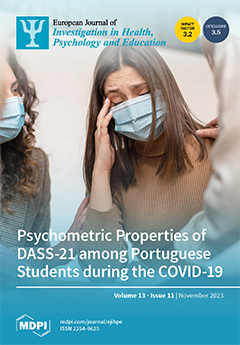Under certain circumstances, masks are an effective and immediate solution to reduce the spread of viral infection. However, the impact of masks on the ability to perform vigorous exercise remains an area of concern. Primarily, this impact has been explored in healthy subjects, yielding contradictory findings, and little is known of it among COVID-19-infected individuals. This study examined the effects of surgical masks, N-95 masks, and unmasked conditions on the performance and perceived exertion (RPE) of infected vs. non-infected young women during high-intensity, repeated sprint exercise (5mSRT). Following a familiarization session, eighty-three (42 COVID-19-previously infected (PIG) and 43 non-infected (NIG)), female participants (age 20.02 ± 1.05 years, BMI 21.07 ± 2.1 kg/m
2) were randomly assigned to one of three mask conditions: unmasked, surgical mask, or N95 mask. All participants attended three test sessions (i.e., one session for each mask condition) at least one week apart. At the beginning of each test session, data related to participants’ physical activity (PA) and sleep behaviours during the previous week were collected. In each test session, participants performed the 5mSRT, during which performance indicators (best distance (BD), total distance (TD), fatigue index (FI) and percentage decrement (PD)) were collected, along with RPE. ANOVA indicated no significant main effects of Groups and Masks, and no significant interaction for Groups × Masks for BD, FI, PD, RPE and most sleep and PA behaviours (
p > 0.05). For TD, the Groups × Mask interaction was significant (
p = 0.031 and ƞp
2 = 0.042). Posthoc analysis revealed, in the unmasked condition, there was no difference in TD between PIG and NIG (
p > 0.05). However, when wearing a surgical mask, PIG covered lower TD compared to NIG (
p < 0.05). Additionally, different types of masks did not affect TD in NIG, while PIG performed the worst using the surgical mask (
p < 0.05). These results suggest post-COVID-19 individuals can maintain physical fitness through regular exercise (i.e., sport science curricula) in unmasked conditions, but not when wearing a surgical mask. Furthermore, the impact of different types of face masks on physical performance seems to be minimal, particularly in uninfected populations; future research is warranted to further explore this impact in post-COVID conditions.
Full article






